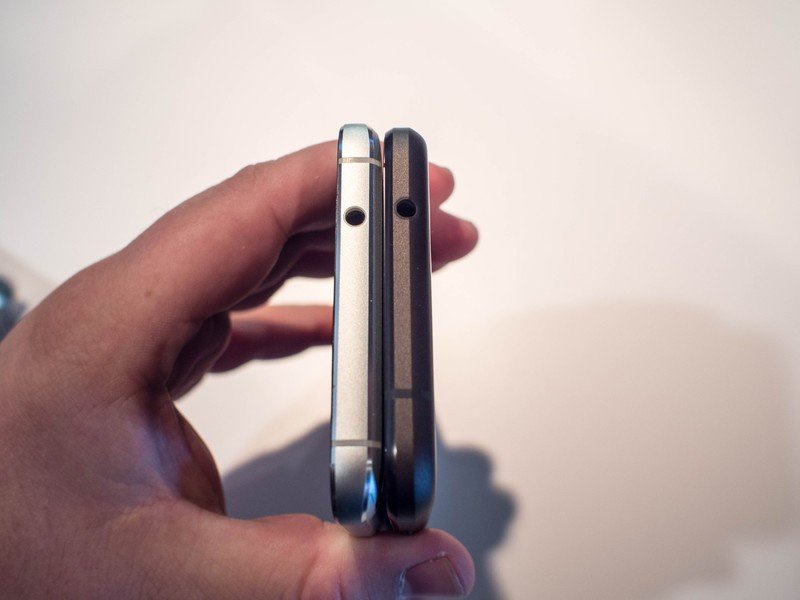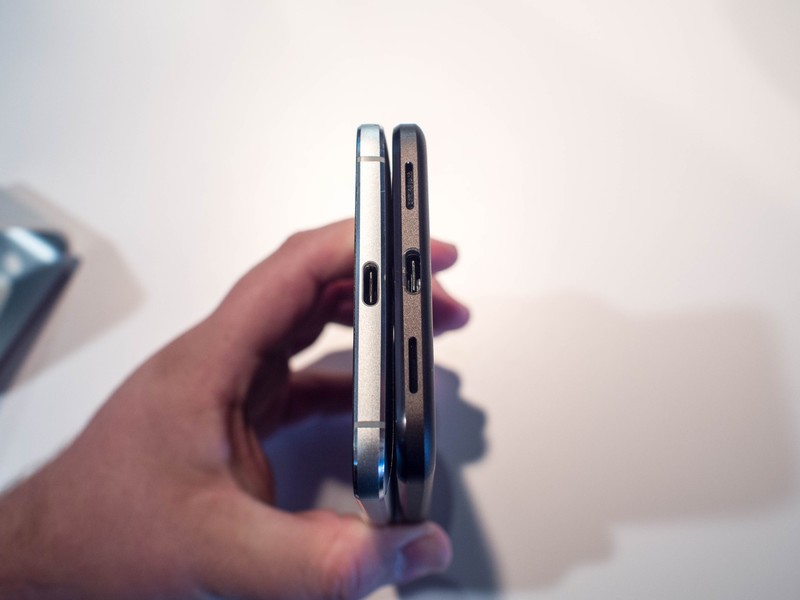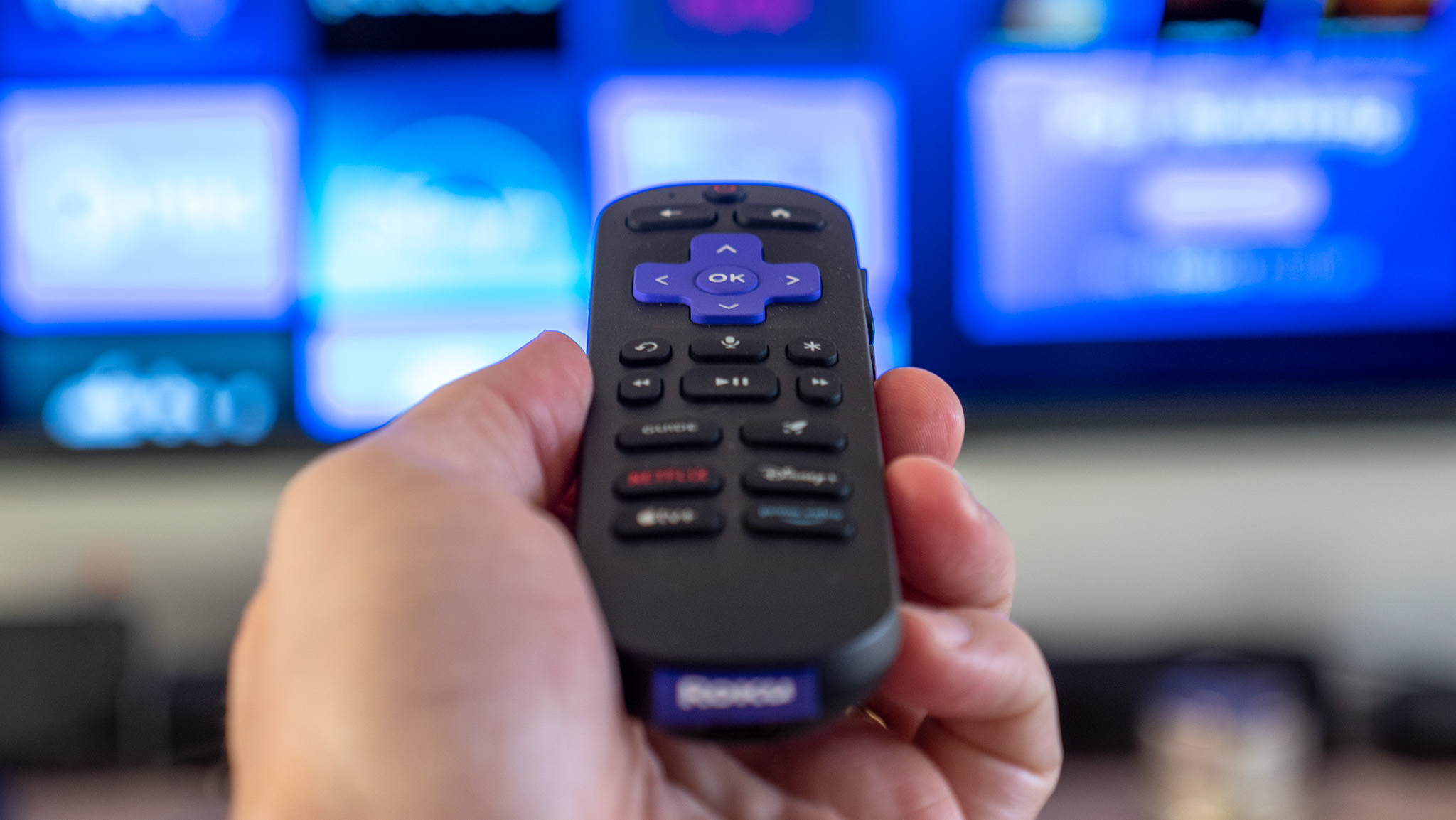Should you upgrade to the Pixel XL from the Nexus 6P?

The Nexus 6P is likely to be the last phone ever made with the Nexus brand, and the new Pixel XL is here to carry on as the successor. But the 6P was (and even a year on still is) a great phone, and it left big shoes to fill. The Pixel XL builds on a lot of what the Nexus 6P had, and is clearly meant to be a proper replacement — naturally, with a higher price this year.
So if you have a Nexus 6P in your pocket right now and have to make a call a year on whether or not the Pixel XL is the right phone for a replacement, we have you covered. Let's talk about upgrading.
Hardware and specs



The most interesting thing to note when looking at these phones is how similar they are in size but also in specs. Though the Nexus 6P and Pixel have different manufacturers and were developed a year apart, it really seems a lot of the Nexus's DNA made it over to the Pixel XL.
The Pixel XL design clearly borrows some from the Nexus 6P.
The Pixel XL has a slightly smaller 5.5-inch display, and that leads to just a tad smaller overall body when paired up next to the Nexus 6P. The Pixel XL is a bit thicker, but has a consistent thickness that tapers down toward the bottom ever so slightly. It loses the front-facing speakers of the 6P in exchange for bottom-firing ports, but keeps the USB-C port, headphone jack and buttons in almost the same spots.
The Pixel XL is of course a primarily metal phone, just like the Nexus 6P — the difference in build is rather notable, though. Even with the Pixel XL's extra flourish of a large glass panel on the back, the phone feels dramatically more solid than the 6P, and doesn't have the same odd coating that gave the 6P a somewhat-plasticky feeling on the back. The Pixel XL's design flourishes are a bit less dramatic as well, with smaller chamfers and less contrast in the shiny portions of the frame.
Internally, things have progressed quite expectedly. There's a faster processor, an extra gigabyte of RAM and the screen is definitely better, but beyond that it's very much the same recipe: near-identical camera specs, the same battery size, Rapid Charging and the choice to go up to 128GB of internal storage. Check the full spec sheets out:
| Category | Google Pixel XL | Nexus 6P |
|---|---|---|
| Operating System | Android 7.1 with Google UI | Android 7.0 |
| Processor | Qualcomm Snapdragon 821 | Qualcomm Snapdragon 810 |
| RAM | 4GB | 3GB |
| Display | 5.5-inch 2560x1440 AMOLED Gorilla Glass 4 | 5.7-inch 2560x1440 AMOLED Gorilla Glass 4 |
| Rear Camera | 12MP, f/2.0 1.55-micron pixels PDAF, LDAF | 12MP, f/2.0 1.55-micron pixels LDAF |
| Front camera | 8MP, f/2.4 | 8MP, f/2.4 |
| Battery | 3450 mAh Non-removable | 3450 mAh Non-removable |
| Charging | Rapid Charging | Rapid Charging |
| Connectivity | USB-C, Bluetooth 4.2 | USB-C, Bluetooth 4.2 |
| Fingerprint sensor | Yes | Yes |
| Storage | 32/128GB Non-expandable | 32/64/128GB Non-expandable |
| Dimensions | 154.7 x 75.7 x 8.6 mm | 159.3 x 77.8 x 7.3 mm |
| Weight | 168 g | 178 g |
Software and value
The situation continues to be a game of small margins when we look at the software of the two phones. Of course the Nexus 6P was already updated to Android 7.0 Nougat before the Pixel XL was announced, but now we have a new version, Android 7.1, shipping on the Pixel — and beyond that, there are additional customizations (dubbed the "Google UI") to look at.
Get the latest news from Android Central, your trusted companion in the world of Android
The big software features of the Pixel XL basically come down to the integration of Google Assistant, a brand new launcher experience and included 24/7 support built into the software. Going a step further, Google is talking a lot about the Pixel XL's speed, touch response and much-improved camera processing capabilities. Beyond that, most of the other changes are just subtle visual ones, and the core experience of using Android 7.0 on a Nexus today isn't too far off from a Pixel XL on 7.1.
Your Nexus 6P will soon have near-identical software to the Pixel XL.
The base of Android 7.1 is certainly coming to the Nexus 6P, but we don't know the whole story about what these other features will look like when (or in some cases if) they come to the Nexus. Things like the slight visual changes, the new launcher and the ability to use Google Assistant can make their way over to a Nexus in the next update, but how they're implemented may be tweaked slightly for the older phones. We also can't really expect the full improvement in camera quality to arrive on the older Nexuses.
If you decide to move on from the Nexus 6P but have appreciated its continued software support, the Pixel XL seems like a logical choice — the newest phone from Google will have the same guarantee of two years of software updates, as well three years of security patches, and that's a big deal. The Pixel XL of course marks a new line of hardware (processors, graphics capabilities) and vision for software (Assistant, Daydream) that Google will be following going forward, so you're also getting ready for the future here.
Then of course there's the price situation, which really makes the difference in an upgrade decision — particularly just a year on with a phone that's likely working well still. At a starting price of $499 last year the Nexus 6P offered a pretty solid value, slotting comfortably above traditional mid-range phones but also well under flagships. Now at $769 the Pixel XL is going head-to-head with the top-end of the market.
The 6P surely has some resale value at this point, but no matter what you're going to be laying out a serious chunk of cash for the new Pixel XL. When you add that to the fact that the Nexus 6P is still a really great phone, shares many of the same specs and features with the Pixel XL, and will soon be receiving much the same software experience, you need to think about this long and hard. This isn't an instant upgrade for many people, and you shouldn't feel on the outside looking in if it doesn't add up for you personally.

Andrew was an Executive Editor, U.S. at Android Central between 2012 and 2020.
